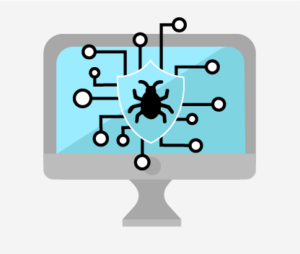Ransomware!
Posted on Tuesday, February 12th, 2019
 Ransomware is a type of malware that prevents access to a system or its data using encryption. Once the data is encrypted, ransomware proceeds to demand a ransom in exchange for a decryption key that will provide access to the data. The desired ransom payment is usually demanded in bitcoin, which is an electronic currency that is virtually untraceable.
Ransomware is a type of malware that prevents access to a system or its data using encryption. Once the data is encrypted, ransomware proceeds to demand a ransom in exchange for a decryption key that will provide access to the data. The desired ransom payment is usually demanded in bitcoin, which is an electronic currency that is virtually untraceable.
Businesses, such as banks, colleges, universities, and hospitals, are prime targets for this type of malware. These organizations contain sensitive data and are often willing to pay the ransom under the impulse to restore operations as quickly as possible. The act of paying the desired ransom is not recommended, because it could motivate criminals to continue this type of attack, as well as mark your organization as a target for future attacks, among many other issues.
Criminals may not be around to provide the decryption key or demand higher ransom in exchange for not leaking the data acquired. Ransomware creation and distribution is now offered as a criminal service, which indicates that even criminals with little knowledge of the malware can purchase the malware at a low cost and obtain a high reward.
The absolute best defense to protect against ransomware is regularly updated and tested backups.
Ransomware is commonly accomplished initially through email phishing, which aims to compromise a system or sensitive data by disguising malicious software as trustworthy sources. Awareness of the risks of phishing should be provided to all members of an organization, whereby members are taught the difference between safe and malicious links and files.
In summary, ransomware is currently one of the most dangerous risks in cyber security and is constantly becoming more sophisticated and easily accessible in cybercrime. Please make sure to raise awareness about ransomware and take the steps necessary to protect yourself and Algonquin College from it.
- Posted in
- Stay Informed